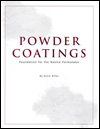Polyurethanes in the Paint and Coatings Industry

PCI recently interviewed Christina Mahally, North American Marketing Director, Dow Polyurethanes, to learn more about polyurethanes, how they are used in coatings and other industries, and the current market climate.
PCI: What is the current market like for polyurethanes?
Mahally: Polyurethanes are one of the most versatile forms of polymers used in various construction, consumer, and automotive industry applications. The chemistry itself can be molded into a variety of different textures such as a rigid foam used to keep food fresh from field to table and preventing home energy loss or a flexible foam used in seating, furniture, and bedding, which enables comfort and a healthier lifestyle, or applied in the form of an elastomeric coating to protect surfaces.
From a market dynamics angle, we have seen softening across these application areas as interest rates and inflation have escalated and maintained an elevated value.
As we look closer into the construction market, the infrastructure bill has renewed confidence in the nonresidential side with a lot of focus now on when and how funding will be distributed. Applications such as roads, bridge restoration, and airport improvements offer an opportunity for polyurethane coatings that can promote longevity and faster return to service.
On the consumer side, we have seen a correction following a heightened demand in the furniture and bedding area with anticipation that this will rebound during the second half of 2023. The automotive market has roughly a two-year period of pent-up demand driven by a variety of supply challenges. We anticipate recovery in 2023 and a big step change as electrification takes the center stage for OEMs. Again, another opportunity for polyurethane chemistry.
PCI: What is the supply situation? Do raw material shortages continue to affect polyurethane production?
Mahally: The supply outlook is more balanced as we head into 2023 versus what we have witnessed over the last two years. While I cannot speak on behalf of the weather, the one foreseeable caveat would be imported materials. As lockdowns resurface in parts of the world, we will continue to monitor for the near-medium term. Overall, a better outlook on the supply front is expected in the coming year.
PCI: What are some unique properties that polyurethanes have that are advancing sustainability?
Mahally: Polyurethanes are a versatile chemistry with excellent durability. They are used in construction insulation for walls, windows, roofing and doors, protective coatings, adhesives, sealants and binders, all of which help to build more energy-efficient and longer lasting buildings.
Polyurethanes are used to replace heavy materials in vehicles and construction applications enabling a lightweight, smaller carbon footprint overall.
We are also seeing more surface in terms of switching to high solids for low- to zero-VOC and advanced recycling, like Dow’s RENUVA™ polyols and SPECFLEXTM C systems, that contain circular and low-carbon materials. In partnership with brand owners, we continue to innovate more sustainable solutions to meet customer needs.
PCI: What coatings markets are these advances helping?
Mahally: It's critical to all markets, including coatings, to transition to more sustainable materials without compromising the durability and resilience that polyurethanes typically bring to coatings applications. This includes incorporating circular or bio-based feedstocks via advance recycling and using a low-emission or low-VOC polyurethane. As brand owners continue to develop more sustainable products, they will look for their suppliers to help them achieve these advancements.
PCI: What is the future of the polyurethanes industry?
Mahally: We will continue to see a strong focus on sustainability, which a versatile material like polyurethanes will continue to enable – whether it is a faster-curing panel adhesive with custom cure times for RV panels, industrial maintenance coatings that extend product life, building more energy-efficient buildings or appliances, or light weighting to enable less energy consumption for vehicles. There have already been significant advancements made, and only more to come to enable a more sustainable future.
PCI: Could you share any areas of opportunities for PU suppliers as they’re looking to help their customers grow?
Mahally: Investments in manufacturing, as well as advancements in sustainability, will be crucial to helping our customers grow in the upcoming years. Dow’s MDI investment will be coming online this year. This optimizes our existing asset infrastructure, improves reliability due to back integration at our Freeport, TX site and increases capacity to support downstream-systems customers’ growth and while delivering a more sustainable production process.
Companies, like Dow, that invest in research development and technical capabilities and are backwards integrated can also offer customers a full range of products such as components, prepolymers, and fully-formulated systems for specific needs.
PCI: How has the market changed as new trends like hybrid work, grocery delivery, and virtual events have come to fruition?
Mahally: Polyurethanes will continue to evolve with new trends. With the evolution in grocery pick-up and delivery, there are different equipment needs to support whether that means additional equipment to hold those temperature-controlled items or a new set-up to enable delivery alternative systems or contactless pick-up. Longer-lasting, lightweight materials for vehicles such as more durable flooring for delivery vehicles are more in-demand with the uptick in online ordering. In the construction industry, we are seeing a trend towards faster return-to-service – an area where our coatings can help by offering a shorter installation time. We follow these trends closely as they evolve and continue to innovate with our customers.
Looking for a reprint of this article?
From high-res PDFs to custom plaques, order your copy today!









